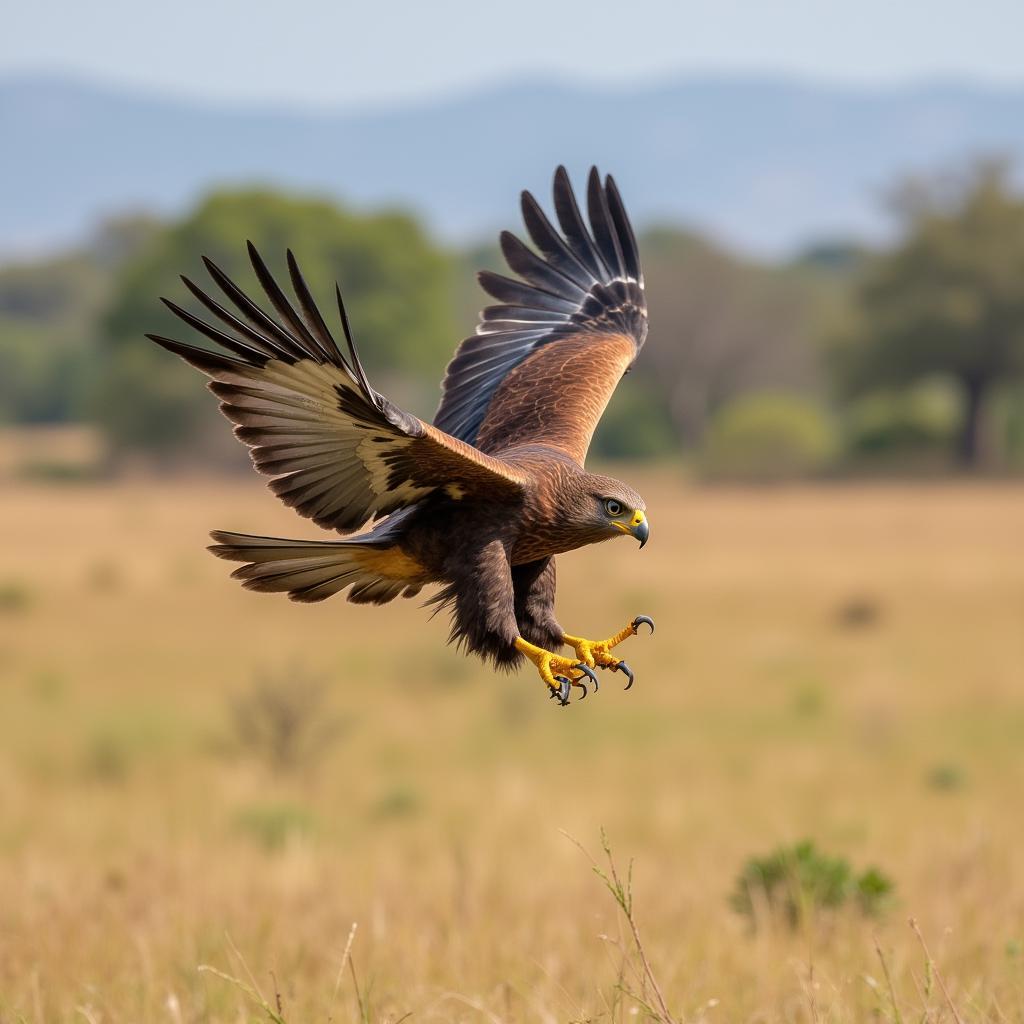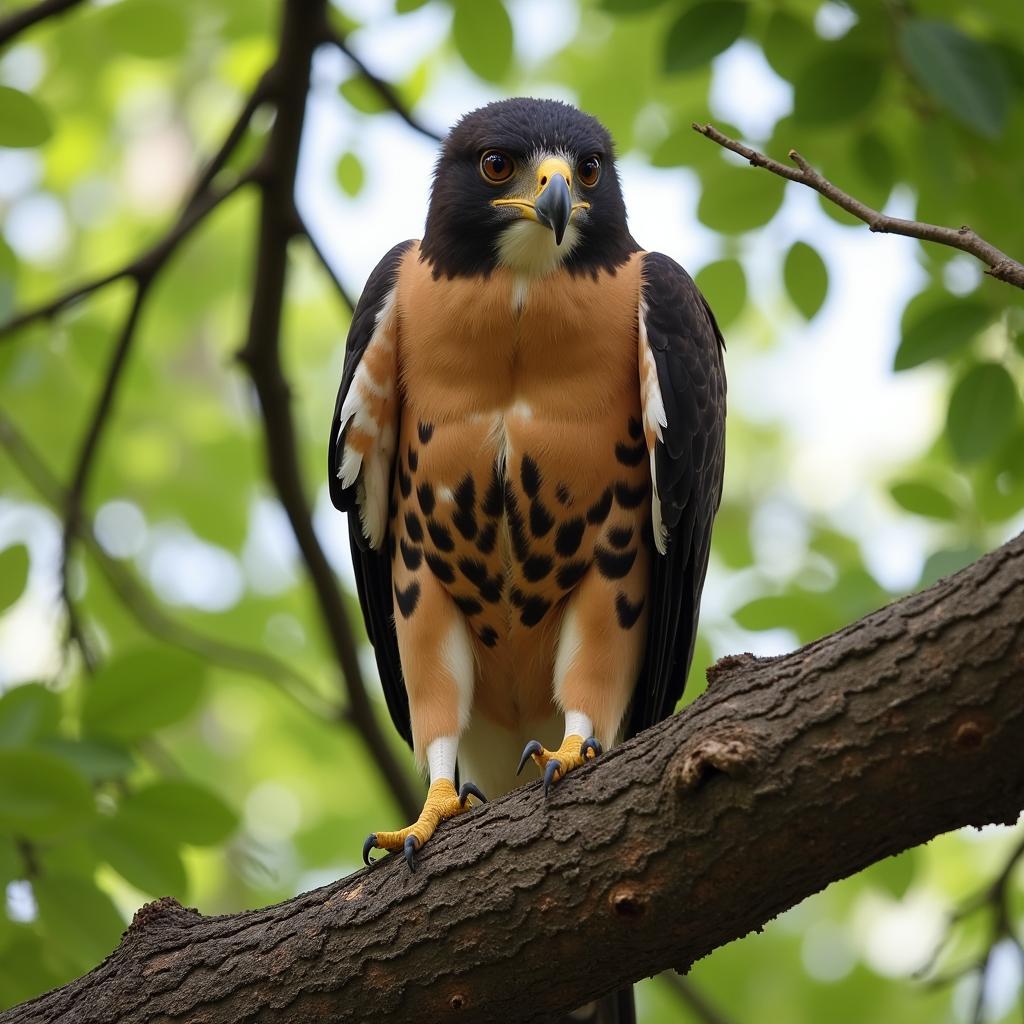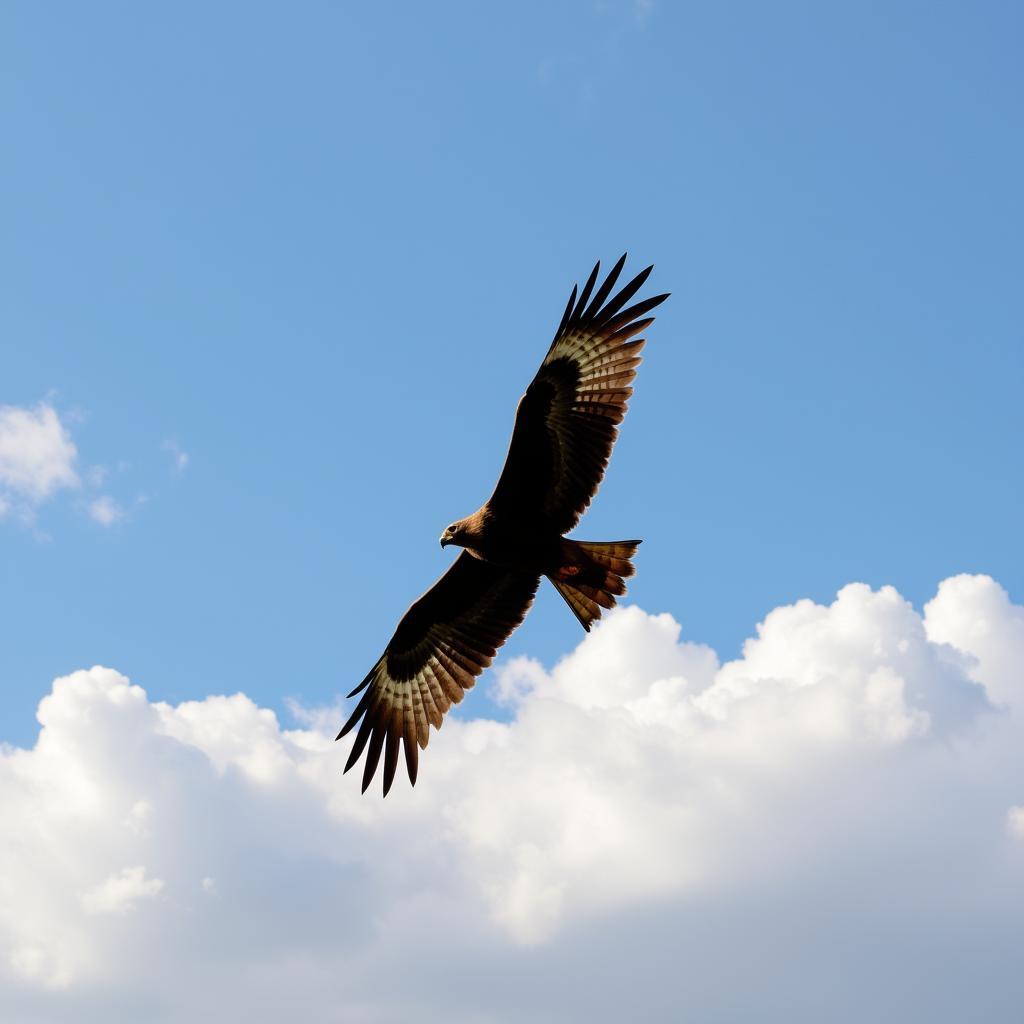The Majestic African Hawk Eagle: A Hunter of the Skies
The African Hawk Eagle, a powerful raptor, commands the skies across sub-Saharan Africa. With its striking plumage and formidable hunting skills, this bird of prey is a true emblem of African wildlife. This in-depth exploration will delve into the fascinating world of the African hawk eagle, covering its habitat, diet, breeding habits, and conservation status.
Understanding the African Hawk Eagle’s Lifestyle
African hawk eagles are known for their adaptability, thriving in diverse habitats ranging from woodlands and savannas to mountainous regions. This adaptability reflects their resourcefulness in locating prey and establishing territories. Their diet primarily consists of small to medium-sized mammals, including hyraxes, monkeys, and squirrels, but they also prey on birds and reptiles. These eagles are highly skilled hunters, utilizing their sharp talons and powerful beak to capture and subdue their quarry.
One of the most remarkable aspects of the African hawk eagle’s life is its complex breeding behavior. Pairs form strong bonds and engage in elaborate aerial displays during courtship. They typically build their nests high in trees, using sticks and leaves to create a sturdy platform for their young. The female lays one to two eggs, and both parents share the responsibilities of incubation and chick rearing.
 African Hawk Eagle Hunting in Savanna
African Hawk Eagle Hunting in Savanna
Identifying the African Hawk Eagle: Physical Characteristics and Behavior
The African hawk eagle displays distinctive physical features that set it apart from other birds of prey. Its size, typically around 60-70 cm in length, combined with a wingspan of up to 1.5 meters, makes it an impressive presence in the African skies. The plumage varies across subspecies, but generally features dark brown upperparts and a white or buff underside with dark barring. The head is often pale with a distinctive dark crown. In flight, the African hawk eagle exhibits a characteristic silhouette with broad, rounded wings and a relatively short tail.
Beyond physical attributes, their behavior also provides key identifying characteristics. Their powerful, direct flight and soaring patterns are often observed. African hawk eagles are vocal birds, particularly during breeding season, emitting loud, piercing calls that echo through their territories. Their hunting strategies are also notable, often involving perching patiently on high vantage points before swooping down on unsuspecting prey.
 African Hawk Eagle Perched on Branch
African Hawk Eagle Perched on Branch
For more information on African birds of prey, see african birds of prey.
Conservation Status and Threats to the African Hawk Eagle
While the African hawk eagle is currently classified as a species of least concern, it faces growing threats due to habitat loss and human activities. Deforestation and agricultural expansion continue to encroach upon their natural habitats, reducing their hunting grounds and nesting sites. Additionally, persecution by humans, often due to perceived threats to livestock, poses a significant challenge. Conservation efforts are crucial to ensure the long-term survival of this majestic bird of prey. These efforts include protecting their natural habitats, raising awareness about their ecological importance, and implementing measures to reduce human-wildlife conflict.
Dr. Anika Moolman, a renowned ornithologist specializing in African raptors, notes: “The African hawk eagle is a keystone species in many ecosystems. Its presence indicates a healthy and balanced environment. Protecting this magnificent bird is essential for the overall well-being of African biodiversity.”
 African Hawk Eagle in Flight
African Hawk Eagle in Flight
You can also learn more about the African kite at african kite. Understanding the intricacies of these majestic birds helps us appreciate the rich tapestry of African wildlife. Furthermore, exploring the african hawk eagle american badger relationship offers a fascinating glimpse into the complex dynamics of the African ecosystem.
Conclusion
The African hawk eagle, a symbol of power and grace, plays a vital role in the African ecosystem. Understanding its life cycle, behavior, and the threats it faces is crucial for its continued survival. Let us work together to protect this magnificent bird of prey and ensure that it continues to soar through the African skies for generations to come. If you’re fascinated by the diverse wildlife of Africa, exploring other fascinating creatures like the african flying animals or learning about the african grey parrot native habitat can further deepen your appreciation for this incredible continent.
FAQ
- What does the African hawk eagle eat? Primarily small to medium-sized mammals, birds, and reptiles.
- Where does the African hawk eagle live? Sub-Saharan Africa, in various habitats like woodlands, savannas, and mountains.
- Is the African hawk eagle endangered? Currently classified as Least Concern, but facing increasing threats from habitat loss and human activity.
- How big is an African hawk eagle? Around 60-70 cm in length with a wingspan up to 1.5 meters.
- What does the African hawk eagle sound like? Loud, piercing calls, especially during breeding season.
- How do African hawk eagles hunt? Often by perching on high vantage points and swooping down on prey.
- What are the main threats to the African hawk eagle? Habitat loss due to deforestation and agriculture, and persecution by humans.
Common Situations and Questions
- Scenario: You spot a large bird of prey in Africa. How can you tell if it’s an African hawk eagle? Look for its size, distinctive plumage, and powerful flight patterns.
- Question: What can I do to help protect the African hawk eagle? Support conservation organizations working to protect its habitat and reduce human-wildlife conflict.
Further Exploration
You might be interested in learning more about other African raptors or the specific conservation challenges facing the African hawk eagle.
Call to Action
For further assistance or information, please contact us: Phone: +255768904061, Email: kaka.mag@gmail.com or visit us at Mbarali DC Mawindi, Kangaga, Tanzania. Our customer service team is available 24/7.
